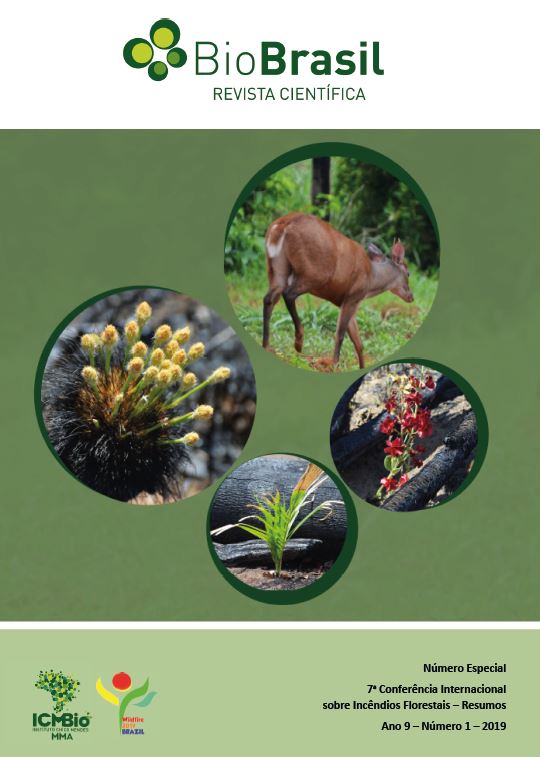Long-term, fire-induced changes in habitat structure and microclimate affect cerrado lizard communities
DOI:
https://doi.org/10.37002/biodiversidadebrasileira.v9i1.972Palavras-chave:
Lizards, cerrado, savanna, community structure, conservation, prescribed fireResumo
Fire transforms the structure of natural habitats and, consequently, modifies microclimates affecting ectotherm organisms that are particularly susceptible to changes in the thermal environment. Nevertheless, the effects of fire-induced microclimatic shifts upon natural populations have been neglected. We measured the central tendency and variation of habitat structural and microclimatic variables in experimental plots of Neotropical savanna vegetation subjected to different fire regimes (control, biennial/early dry season, biennial/mid dry season, biennial/late dry season, quadrennial/mid dry season; one 10 ha replicate of each) and assessed their effects upon lizard community structure (15 species). In addition, we evaluated the underlying mechanisms linking fire-induced environmental changes to community structure, by comparing lizard body condition and survival between different fire regimes. A guided regularized random forest (GRRF) analysis indicated that fire suppression promoted increased tree density, canopy cover and leaflitter weight, whereas burning had the opposite effects, reducing the habitat structural complexity. A redundancy analysis (RDA) indicated that (1) the best predictors of fire regimes were means of structural variables, but variances of microclimatic variables and (2) the reduced structural complexity of burned plots both increased and decreased the variation of microclimatic variables. A canonical correspondence analysis (CCA) revealed that lizard community structure was chiefly influenced by a gradient of decreasing tree density, canopy cover and leaf litter weight with increasing fire severity. About half of the lizard species were favored in the fire-protected plot, while the other half was favored in the burned plots, with most of the variation being explained by structural variables. Lizard body condition and survival rates were not affected by fire regimes, suggesting a dominant role of thermoregulation opportunities afforded by habitat structure—instead of food availability or predation rates—upon community structure. Our findings indicate that even sporadic fires can have profound effects upon lizard communities and that protecting some habitat patches from burning is essential to maximize lizard diversity in Cerrado landscapes.
Downloads
Downloads
Publicado
Edição
Seção
Licença
Copyright (c) 2021 Biodiversidade Brasileira - BioBrasil

Este trabalho está licenciado sob uma licença Creative Commons Attribution-NonCommercial-NoDerivatives 4.0 International License.
Os artigos estão licenciados sob uma licença Creative Commons Atribuição-NãoComercial-SemDerivações 4.0 Internacional (CC BY-NC-ND 4.0). O acesso é livre e gratuito para download e leitura, ou seja, é permitido copiar e redistribuir o material em qualquer mídia ou formato.











